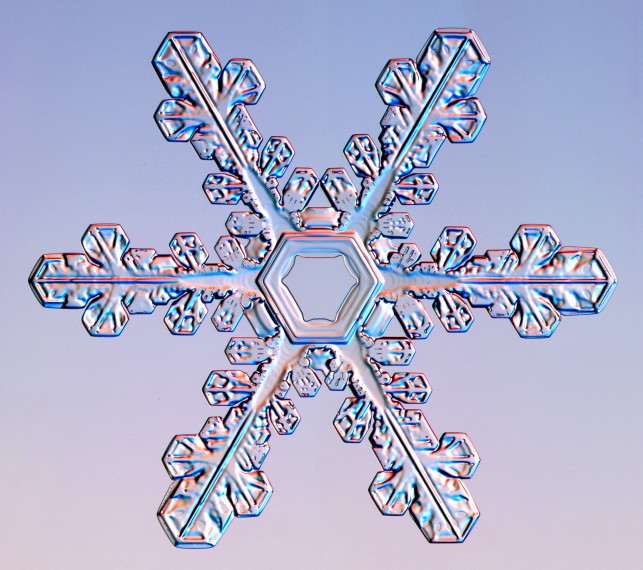Tao Quan
Are Any Two Snowflakes Alike?
Do you remember when you were a little kid and you loved to play in the snow on a cold winter day? You would go sled, or ski and enjoy the snow rushing on your face. Remember trying to catch snowflakes on your tongue, and then you would try to catch them in your hand and examine them before they melted. Well if you were like me, you asked yourself, huh, I wonder if any of these snowflakes are alike. This question has been asked for many years by people of all ages. It most likely developed from people all over the world asking this question on every snowy winter day. There are so many snowflakes every year; two of then must have been the same some point in history. This is most likely how this myth arose.
If you think to yourself, there are billions of trillions of snowflakes every year. Two of them some time in history must have been the same. This question can be answered in a couple of different ways; it really depends on your perspective of snowflakes. If you just looked through a lot of snowflakes with the human eye you could potentially find two snowflakes that looked slightly similar, but you would never find any two that were the same. If you wanted to say that any two snowflakes are totally alike you would need to look in a high powered microscope and check the snowflakes at a molecular level.
If you were to do this you would find that in the time the earth has been around, the chances of having two naturally occurring snowflakes be perfectly alike is basically zero. According to Kenneth G Libbrecht a physicist at Caltech, there are many, many diversions from a pure water molecule greatly reducing the chances of any two snowflakes being alike even before they fall. Second, according to him if you had 100 books you could arrange them almost 10^158 different ways, that “is about 10^70 times larger than the number of atoms in the universe.” This just shows the diversity you can get with only 100 objects. 100 objects doesn’t even compare to how many ways you can make a snowflake. Consider a snowflakes variation due molecules, fall time, climate, wind, etc. creating almost infinite different variations of snowflakes. With all of these possible variations the chance of finding any two perfectly alike snowflakes is next to zero. Myth busted.
“Is It True That No Two Snow Crystals Are Alike?” Everyday Mysteries. Lib. of Congress, 19 Feb. 2009. Web. 24 Jan. 2010.
Libbrecht, Kenneth G. “Is It Really True That No Two Snowflakes Are Alike?” SnowCrystals. Caltech, 1 Feb. 1999. Web. 24 Jan. 2010.
